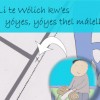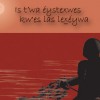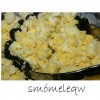We have exciting news! In Fall 2021 we will introduce our new and improved Stó:lō Shxwelí language website. Stay tuned for information about the launch; we’re looking forward to introducing the new site to you!
Archive | General
Éy swáyel!
Welcome to the Stó:lō Shxwelí Halq’méylem Language Collection. You can find language resources and stories for learning Halq’méylem. Just explore the menu up top, and keep coming back for updates and new posts!

Osu thet: ‘Wát’, x̲ét’e, ‘kw’e le qelqelí:ylt the, kwálx the mimel’ó:ylha?’
Osu thet: ‘Wát’, x̲ét’e, ‘kw’e le qelqelí:ylt the, kwálx the mimel’ó:ylha?’ means ‘”Who (was it),” she said, “that wrecked, hid, the doll?”

Li te Wólich kw’es yóyes, yóyes thel málelh.
Li te Wólich kw’es yóyes, yóyes thel málelh means ‘My late father was working at Wahleach’.

Is t’wa eystexwes kw’es las lex̲éywa
Is t’wa eystexwes kw’es las lex̲éywa means ‘I guess he liked to go torchlighting.’. You could also translate it as ‘He must have liked to go torchlighting’.

ítet
Itet means ‘to sleep’.

yétl’q’thet tútl’o
Yétl’q’thet tútl’o means ‘He paints himself.’

smómeleqw
Smómeleqw means ‘mixed’, or ‘mixed up’. You can use it for mixed vegetables, mixed clothing, or people with ‘scrambled brains’.

tem’elíle
Tem’elíle is the Halq’eméylem word for ‘May’. Literally it means ‘salmonberry time’.

xwe’ít?
Xwe’ít is a question word. It can mean ‘What did __ do?’, or ‘What happened?’. Elders sometime also use xwe’ít for ‘why’.
